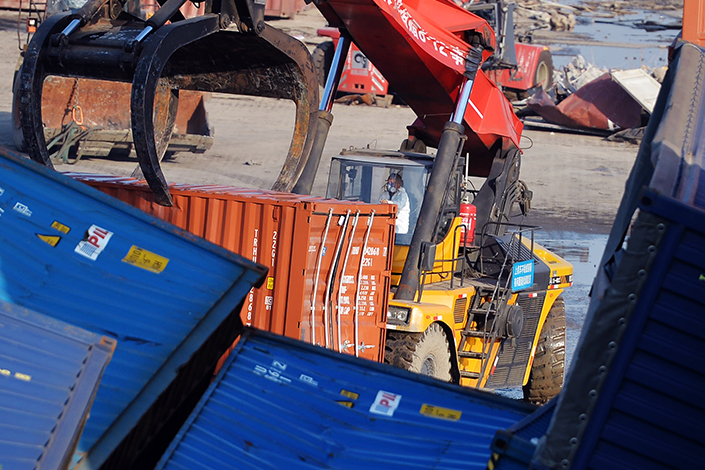Tianjin Port to Resume Transporting Hazardous Cargo Two Years After Deadly Blast

Tianjin Port is set to resume transporting some kinds of hazardous cargo, including corrosives, on Tuesday, nearly two years after a devastating blast killed 165 people, Caixin has learned.
The largest port in northern China experienced one of the country’s deadliest industrial accidents in decades on Aug. 12, 2015. The initial blast was caused by the self-ignition of hazardous materials in shipping containers at a warehouse, according to a report published last year by the State Council, China’s cabinet.
It wasn’t immediately clear what prompted the Tianjin government to make the change.
Since the explosion, the port has halted operations related to dangerous cargo. The suspension transferred most of the dangerous cargo in north China to the nearby Qingdao Port and other smaller ports.
The suspension increased companies’ transportation costs, because prices for dangerous chemicals soared at nearby ports, said an employee with a cargo agent company in northern China, who is in charge of dangerous goods transportation. He said the government should beef up policies related to the transport of hazardous chemicals.
On July 15, two vice mayors of Tianjin hosted a meeting about restarting some dangerous goods operations, a source close to the matter told Caixin.
In the meeting, the Tianjin government ordered the transport and the port departments to work with the state-controlled Tianjin Port Sinochem Dangerous Goods Logistics Co. Ltd. to resume transporting two of the nine categories in the United Nation’s dangerous goods classification — corrosive and miscellaneous goods.
Corrosives refer to acids, dyes and other substances that can degrade materials upon contact. Miscellaneous goods include a variety of substances such as dry ice, fuel cell engines and magnetized material.
The government said seven categories of dangerous goods will be forbidden at the port: explosives, gases, flammable liquids, flammable solids, oxidizing substances, toxic and infectious substances, and radioactive material.
The 2015 Tianjin warehouse blast killed 165 people, injured 798 and caused nearly 7 billion yuan ($1.03 billion) in damage. A total of 49 suspects, including employees of a logistics company and local government officials, received sentences from suspended death to three years in prison for their roles in the accident.
Contact reporter Song Shiqing (shiqingsong@caixin.com)

- 1Cover Story: How China Inc. Is Discovering Its New World in Brazil
- 2Offshore Yuan Breaches 7.0 Per Dollar to Hit 15-Month High
- 3In Depth: Memory Shortage Creates Space for China’s Lesser-Known Chipmakers
- 4China Targets AI-Generated Misinformation, Illegal Stock Tips in New Cleanup
- 5Chinese GPU-Maker Moore Threads Unveils AI Chip to Rival Nvidia
- 1Power To The People: Pintec Serves A Booming Consumer Class
- 2Largest hotel group in Europe accepts UnionPay
- 3UnionPay mobile QuickPass debuts in Hong Kong
- 4UnionPay International launches premium catering privilege U Dining Collection
- 5UnionPay International’s U Plan has covered over 1600 stores overseas




